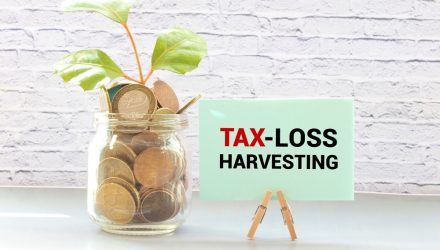With just over four months left in 2022, now is an ideal time for advisors and investors to consider tax-loss harvesting, or parting ways with a losing investment for tax benefits while using the proceeds to move onto potentially greener pastures.
Some market observers believe that 2022 tax-loss harvesting could be an ideal avenue to boost adoption of environmental, social, and governance (ESG) exchange traded funds. It’s a relevant argument to make at a time when both traditional plain vanilla equity and fixed income ETFs are faltering.
It’s conceivable that some advisors and investors will swap out of those old guard funds in favor of ESG approaches. This comes at a time when the landscape of equity-based ESG ETFs is brimming with options and fixed income funds in this arena are growing in number, too. In fact, ESG ETFs are excellent alternatives for core exposures.
“As a result, the equity sector ESG portfolio doesn’t differ much from the traditional market cap weighted portfolio — less than 2% actually. Tech is the largest overweight and Consumer Discretionary is the largest underweight,” noted Matthew Bartolini, head of SPDR Americas Research.
Examples of equity-based ESG ETFs that fit the bill as credible core allocations include the SPDR S&P ESG ETF (EFIV) and the SPDR MSCI USA Climate Paris Aligned ETF (NZUS). EFIV follows the S&P 500 ESG Index while NZUS tracks the MSCI USA Climate Paris Aligned Index.
Investors should note that ESG ETFs aren’t mirror images of traditional beta counterparts. Nor are ESG funds a risk-free asset class.
“Drivers of active risk in the ESG portfolio are explained by stock-specific factors — an intuitive trend given that stocks are weighted differently and some are excluded entirely — as well as certain equity style factors, as shown below. And within style, a positive loading towards firms with stronger profitability profiles represents the largest style contributor to active risk,” added Bartolini.
ESG bond ETFs to consider as tax-loss harvesting additions include the actively managed SPDR Nuveen Municipal Bond ESG ETF (MBNE) and the SPDR Bloomberg SASB Corporate Bond ESG Select ETF (RBND).
Bottom line: Broader market volatility is creating some interesting tax-loss harvesting opportunities, which could bring ESG ETFs into focus.
“Ongoing market volatility across equity and fixed income markets presents big tax-loss harvesting opportunities. In addition to replacing out higher-fee mutual funds for lower-cost ETFs, you can use tax replacements to refine exposures, target new ESG strategies, and build an ESG core with a similar profile to a more traditional allocation. And the best time to do that may be when the losses in core equity and bond assets are so abundant,” concluded Bartolini.
For more news, information, and strategy, visit the ESG Channel.
The opinions and forecasts expressed herein are solely those of Tom Lydon, and may not actually come to pass. Information on this site should not be used or construed as an offer to sell, a solicitation of an offer to buy, or a recommendation for any product.

